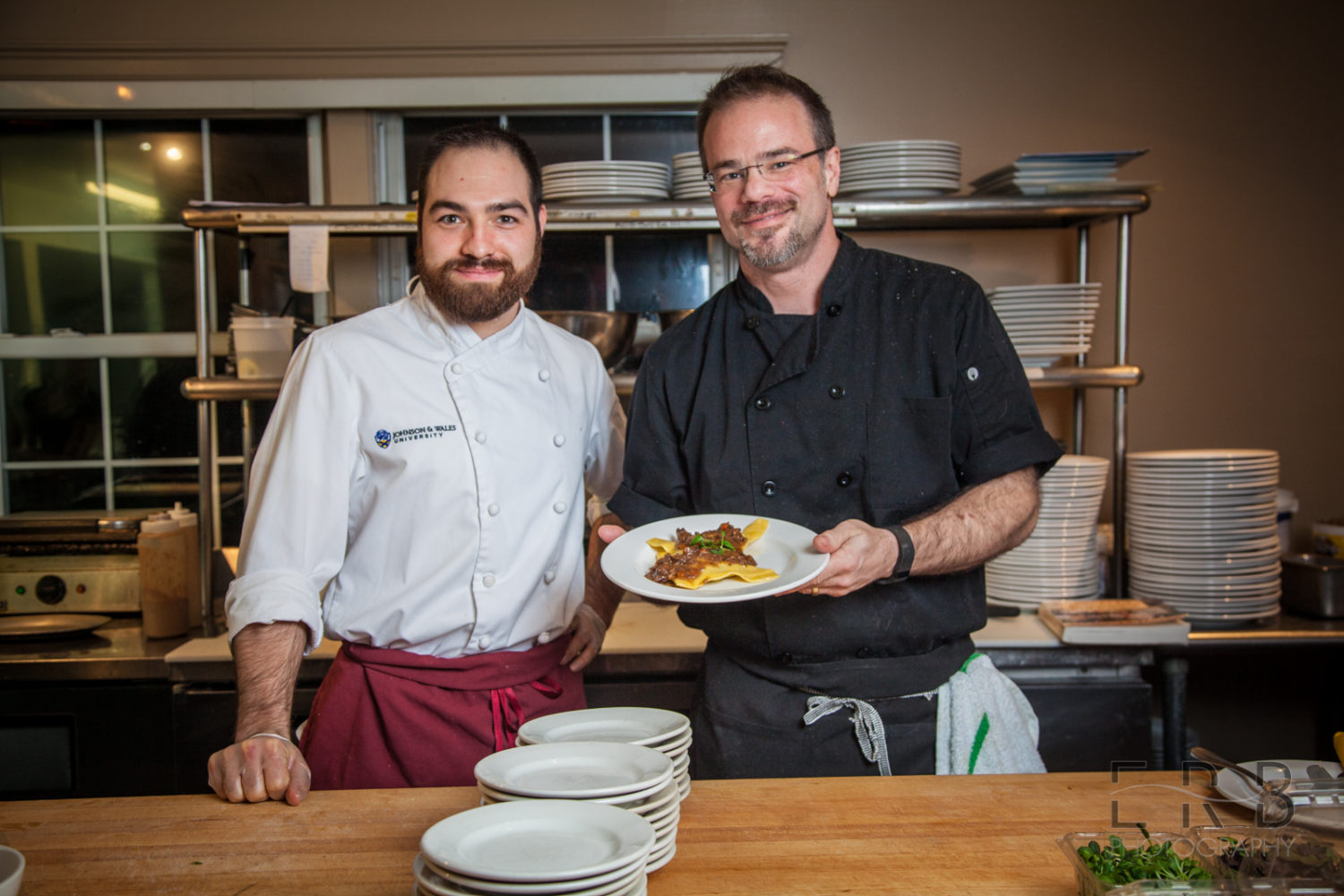
The legendary Marcella Hazan changed the way Americans thought about and cooked Italian food. In 1997, I had the pleasure of meeting her at an event featuring food from her cookbook Marcella Cucina. As she signed my copy, she asked, “How did everything taste?” Her use of the word “taste” stuck with me that night and again when I read this in the book’s introduction: “Wherever the dishes come from, my only concern is how they taste.” Recently, the line came back to me when Christopher Rovezzi, chef and owner of Rovezzi’s Ristorante in Sturbridge, said something similar to describe what matters most to him.
Turns out, Rovezzi is a fan of Hazan, and he does the legend proud.
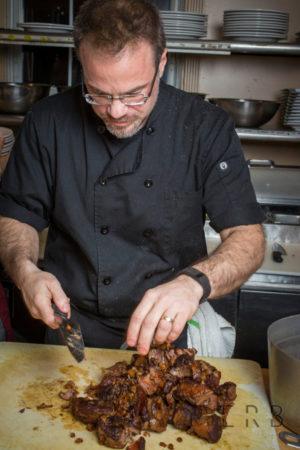 Hazan had no patience for food with “imagined flavors,” dishes that lacked “identity,” or culinary fusion. She focused on taste and how best to genuinely achieve it. So does Rovezzi: “I read that book’s introduction and thought, ‘Right!’ Nothing else matters if it doesn’t taste great. Service and setting add circumstantial interest to eating but signify nothing when taste is lacking and isn’t authentic. I use local ingredients but I don’t care about farm-to-table food because that’s about marketing not taste. You’ll never see a foam on any of my plates, no molecular gastronomy. I don’t pretend to be a chef at The Four Seasons. My food is my own. Other chefs can do that. I’m what I’m supposed to be.”
Hazan had no patience for food with “imagined flavors,” dishes that lacked “identity,” or culinary fusion. She focused on taste and how best to genuinely achieve it. So does Rovezzi: “I read that book’s introduction and thought, ‘Right!’ Nothing else matters if it doesn’t taste great. Service and setting add circumstantial interest to eating but signify nothing when taste is lacking and isn’t authentic. I use local ingredients but I don’t care about farm-to-table food because that’s about marketing not taste. You’ll never see a foam on any of my plates, no molecular gastronomy. I don’t pretend to be a chef at The Four Seasons. My food is my own. Other chefs can do that. I’m what I’m supposed to be.”
Rovezzi calls his food “lusty,” describing its intense warm feeling. And indeed to call it comfort food doesn’t do it justice. The food is recognizable, not because you are eating spaghetti and meatballs but because he says, “No matter what the dish is you taste something familiar. I haven’t changed my food and style since we opened in 2002. I have tried to innovate but only to prevent myself and my customers from getting bored. But if someone doesn’t have that visceral reaction, I’m getting it wrong.”
That is certainly true of the porcini mushroom panzerotti with oxtail ragout, which won him the first Worcester’s Best Chef competition in 2007. Maybe you haven’t seen the shape of the ravioli-like panzerotti or eaten oxtail before but the idea of a mushroom ravioli in a rich meat sauce invites even the least intrepid eaters in. Rovezzi does change the menu seasonally to take advantage of what is available and try new things, explore new dishes, and experiment on whim, just don’t expect him to be heart healthy because that’s not authentic to him. “I don’t hide from it,” Rovezzi says. “My grandmother’s grandmother wasn’t using 2% milk. Marcella Hazan used butter. My menu isn’t healthy. My food is a little fattening. It is what people want to eat. If you come here on a diet, decide it’s going to be a cheat day.” That said, he will respond when the customers ask for things as a rule not a trend. Rovezzi took it as a challenge for years to find flour that would allow him to make really good and gluten-free handmade pastas and focaccia bread (all available with 24-hour advanced notice).
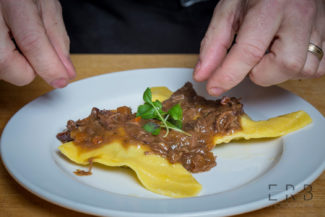 The important thing to Rovezzi is that his pasta is appealing to customers and tastes delicious no matter what. That is true of the instantly familiar dishes like veal saltimbocca, pasta bolognese, and chicken parm, and those that are not, like lasagna filled with winter squashes and maple sausage. The meat next to those caramelized root vegetables and cavatelli? Rabbit. In other words, this is not Rovezzi’s II, a sequel to his father’s beloved Worcester restaurant that closed in 1992.
The important thing to Rovezzi is that his pasta is appealing to customers and tastes delicious no matter what. That is true of the instantly familiar dishes like veal saltimbocca, pasta bolognese, and chicken parm, and those that are not, like lasagna filled with winter squashes and maple sausage. The meat next to those caramelized root vegetables and cavatelli? Rabbit. In other words, this is not Rovezzi’s II, a sequel to his father’s beloved Worcester restaurant that closed in 1992.
“My dad never changed his menu. My dad opened with a menu in 1978 and closed with the same menu. We had twelve veal dishes. We were the biggest veal seller in the state of Massachusetts. So when I knew I wanted to open a new Rovezzi’s, I did not want to do it in Worcester. I didn’t want everyone to think it was going to be the same restaurant.” Yet the entire reason he opened up a restaurant was because he is his father’s child. Rovezzi was second in command at The International – a job he loved and “you retire doing.” Unless you are a Rovezzi: “I wasn’t the top guy. I have my father in me, I have to be the last decision-maker. That’s me.”
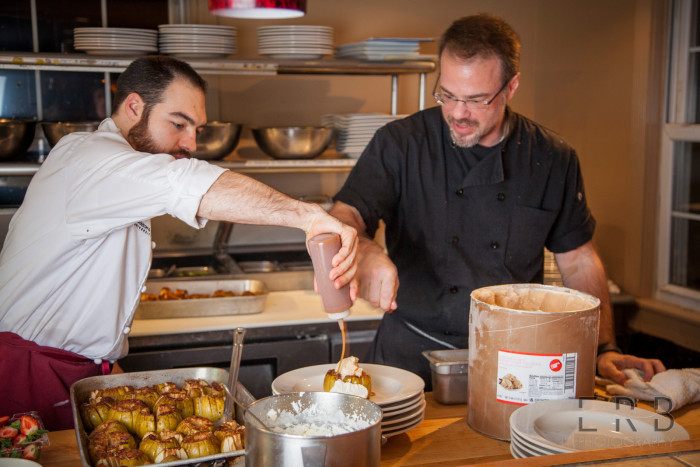 Christopher first located Rovezzi’s in a former pub that was part of the Sturbridge Country Inn but quickly encountered two problems. The first was you could not see the restaurant from the street, and he wasn’t allowed to have a sign. Rovezzi solved that problem using his gift for communication, building relationships, and confidence in his food: He invited 40-50 business owners from around Sturbridge for a free dinner with booze dinner at which he told them how happy he was to join the community and to please spread the word. A week later, he was turning people away. A year later, he took over the much larger space that houses Rovezzi’s today. The second problem was Rovezzi’s didn’t have the red sauce Italian-American food or a fettuccini alfredo, and when people didn’t see that on the menu, they left. Rovezzi solved that problem by making sure he satisfied those who stayed:
Christopher first located Rovezzi’s in a former pub that was part of the Sturbridge Country Inn but quickly encountered two problems. The first was you could not see the restaurant from the street, and he wasn’t allowed to have a sign. Rovezzi solved that problem using his gift for communication, building relationships, and confidence in his food: He invited 40-50 business owners from around Sturbridge for a free dinner with booze dinner at which he told them how happy he was to join the community and to please spread the word. A week later, he was turning people away. A year later, he took over the much larger space that houses Rovezzi’s today. The second problem was Rovezzi’s didn’t have the red sauce Italian-American food or a fettuccini alfredo, and when people didn’t see that on the menu, they left. Rovezzi solved that problem by making sure he satisfied those who stayed:
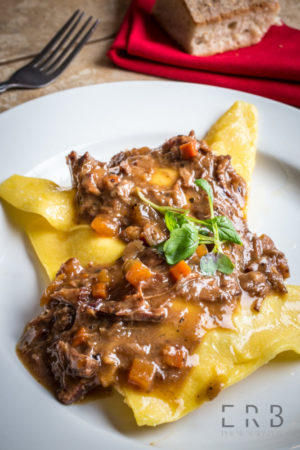 “All I did was give the town food that they hadn’t had before. I used to engage the customers who wanted that food or said, ‘I can get chicken parm at Applebee’s for $11.95 and it comes with a breadstick and a salad.’ Today I just smile and say, ‘That’s a great deal and probably where you should go.’ I used to try and explain the difference between the frozen chicken at Applebee’s and the hand cut and pounded chicken here. That’s a foreign language to people who are looking for a meal for a price. It’s pointless. I focus on pleasing the people who know my restaurant delivers value for the price I charge. I genuinely care about that. I’m going to do anything for them and they are going to sell my restaurant. Luckily, I have a lot of people who get that.”
“All I did was give the town food that they hadn’t had before. I used to engage the customers who wanted that food or said, ‘I can get chicken parm at Applebee’s for $11.95 and it comes with a breadstick and a salad.’ Today I just smile and say, ‘That’s a great deal and probably where you should go.’ I used to try and explain the difference between the frozen chicken at Applebee’s and the hand cut and pounded chicken here. That’s a foreign language to people who are looking for a meal for a price. It’s pointless. I focus on pleasing the people who know my restaurant delivers value for the price I charge. I genuinely care about that. I’m going to do anything for them and they are going to sell my restaurant. Luckily, I have a lot of people who get that.”
Those customers and his loyalty to them have pulled Rovezzi through difficulties self-created and not. Before the recession hit in 2008, he had opened two more Rovezzi’s in Worcester and Rutland and they were doing fine but he wasn’t. He was servicing all three and finding it hard to delegate. In that way the recession was a relief: It forced him to close the other two locations and refocus on making sure the customer has a great experience no matter how much they have to spend. “That is why I am still in the game,” Rovezzi says. “I am still here every day. I still cook. I still think this has to work tonight and every night. That would be the name of my book: The Edge. I am constantly on the edge of fear and of shit I can’t control. I live in fear every day that my restaurant won’t stay successful and that fear causes me to pay attention to everything. Make it as good as can be every night for the customers. That’s my happy. I need to provide them with that experience. It just has to be that people are happier than when they came in because there’s a lot of shit that’s going on out there that you want to forget about. I’m not changing the world or performing brain surgery, but I can affect the lives, in a small way, of 600 to 800 people a week.”
Which is why as he moves into the middle of his second decade in business, Rovezzi’s biggest fear is a couple with $100 deciding where to go out to eat and one of them says, “How about Rovezzi’s?” and the other says, “Oh, we’ve been going to Rovezzi’s for years.” Christopher constantly worries about the next sentence. Is it “Yeah and it’s awesome!” or “Yeah, you’re right let’s go somewhere else…”
 Rovezzi realizes there are lots of new places to choose from in Worcester and increasingly Sturbridge. Not all of them stand up and continue to deliver great taste but more and more do. He plans on continuing to play his game his way. Rovezzi’s is the legacy now. He has no interest in competing against the “young punks” (a term he uses mostly with affection), which is why he has not entered the Best Chef competition since winning it again in 2012. “So many of the new chefs are great, they really are. And it pisses me off they are so good. Even the ones doing foams – they want to explore, have fun, and try things but they are focused on the taste. I have cooks who come in with resumes that are tasting menus, but I’d rather know someone can cook a chicken perfectly 100 times in a row. I want someone to put the time in to understand the taste before swishing sauce on the plate with a paintbrush.”
Rovezzi realizes there are lots of new places to choose from in Worcester and increasingly Sturbridge. Not all of them stand up and continue to deliver great taste but more and more do. He plans on continuing to play his game his way. Rovezzi’s is the legacy now. He has no interest in competing against the “young punks” (a term he uses mostly with affection), which is why he has not entered the Best Chef competition since winning it again in 2012. “So many of the new chefs are great, they really are. And it pisses me off they are so good. Even the ones doing foams – they want to explore, have fun, and try things but they are focused on the taste. I have cooks who come in with resumes that are tasting menus, but I’d rather know someone can cook a chicken perfectly 100 times in a row. I want someone to put the time in to understand the taste before swishing sauce on the plate with a paintbrush.”
So how does he compete? Through his customers. Rovezzi’s sole marketing expense is social media to reach those customers and engage them honestly and transparently.
“I just put myself in the position where I am there for the people dining at Rovezzi’s. I get an intense and physical reaction inside of me watching two people eat my food. When one smiles and says to the other one, ‘Taste this!’ That’s giving other people pleasure. I know that sounds vaguely sexual but that’s the best way to describe that pleasure.”
That’s the power of taste.
Editor’s Note: Christopher Rovezzi was the second chef to participate in the Chef’s Best dinner series. You can read about the experience here and please consider joining us for the next installment of the series.
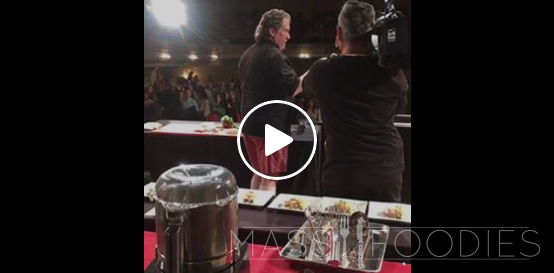



 The important thing to Rovezzi is that his pasta is appealing to customers and tastes delicious no matter what. That is true of the instantly familiar dishes like veal saltimbocca, pasta bolognese, and chicken parm, and those that are not, like lasagna filled with winter squashes and maple sausage. The meat next to those caramelized root vegetables and cavatelli? Rabbit. In other words, this is not Rovezzi’s II, a sequel to his father’s beloved Worcester restaurant that closed in 1992.
The important thing to Rovezzi is that his pasta is appealing to customers and tastes delicious no matter what. That is true of the instantly familiar dishes like veal saltimbocca, pasta bolognese, and chicken parm, and those that are not, like lasagna filled with winter squashes and maple sausage. The meat next to those caramelized root vegetables and cavatelli? Rabbit. In other words, this is not Rovezzi’s II, a sequel to his father’s beloved Worcester restaurant that closed in 1992.

